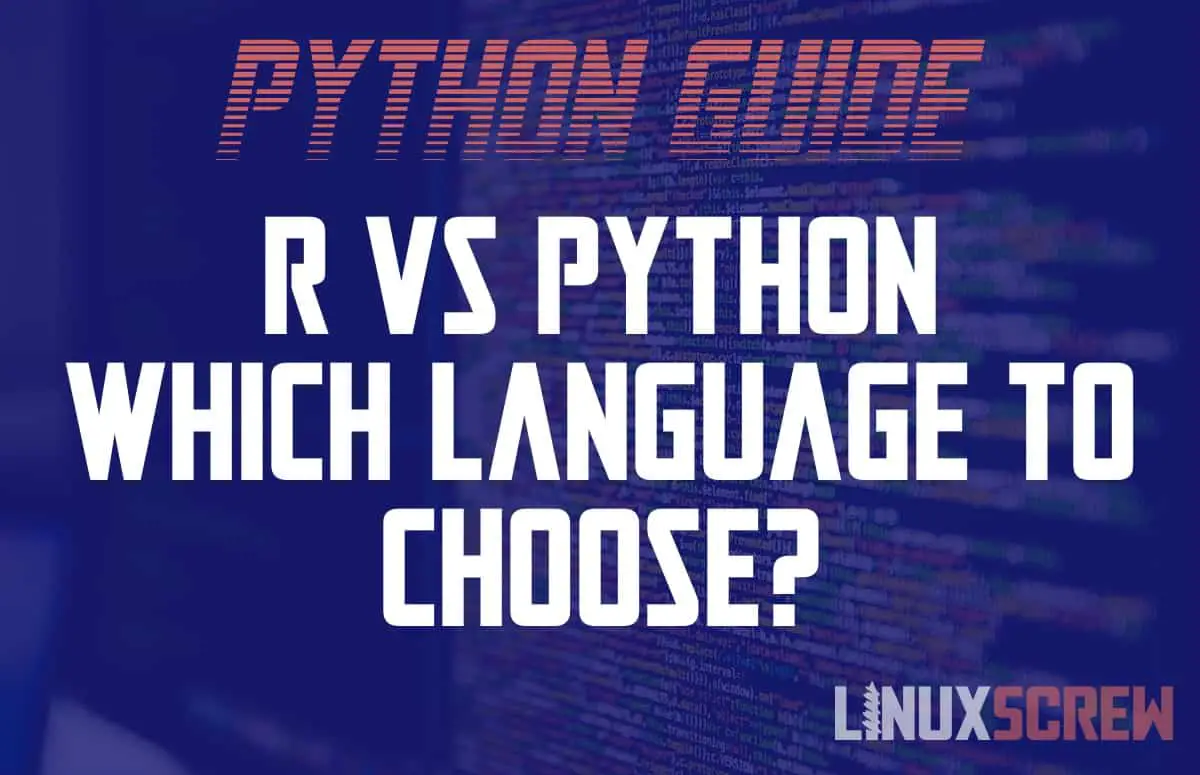This article provides a simple comparison of the R and Python programming languages – and what they’re best used for.
If you’re looking to learn to program and are interested in data analysis, you’ll probably run into the choice – R or Python? This article breaks down each and why you might choose to use one – or both – of these languages.
What is R?
R is a programming language designed specifically for statistical computing.
It is designed for, and widely used for, processing and analyzing large data sets.
What is it Good For?
R is ideal for processing large data sets produced by things like polls, surveys, and the raw data produced by data mining (For example, R could be used to process and make sense of the web-browsing histories of a large number of people to gain insight into what products are popular with them for targeted advertising).
R includes some programing features but is targeted towards data processing. However, R does allow you to interact with objects inside it using a variety of more multipurpose languages like Python and C if you need extended functionality.
R is open-source and supports user-created packages for things like generating visuals/graphs, importing/exporting data in different formats, and generating reports.
The R programming environment is an incredibly powerful tool for data analysis as it was built specifically for that purpose. It has built-in analytical functionality targeting its specific use case which means you don’t have to write that functionality yourself, at the expense of the language not being as flexible for use outside of its targeted purpose.
What is Python
Python is a general-purpose programming language with a focus on simplicity. It’s easy to learn and can be used for just about anything.
Unlike R, it is not explicitly focussed on statistical computing. It can be used to build web apps, games, desktop applications – practically anything.
This doesn’t make it better than R – it’s just intended for a different audience. It does not include the powerful built-in tools the R environment does for analyzing data because that isn’t the sole purpose of Python. Various libraries can be installed to add this functionality, but it’s not the sole purpose of the language.
What is it Good For?
Python is the jack of all trades – good at everything, but probably not the best. It’s multipurpose and flexible but may not offer the best performance, tailored to a specific task, or offer the best way to achieve a goal. R is tailored to statistical computing and analytics; Python is not.
Which is the Easiest?
Python is incredibly popular as a general-purpose language which means that there are piles of tutorials, code examples, and discussions about it to be found online. It’s designed to be easy to learn.
R, being more targeted, lacks as much discussion but is still easy to learn with many good online tutorials and examples.
Which Should I Choose?
If you’re looking to crunch some numbers and want to learn a language that can do things other than crunch numbers, check out Python.
If you’re a big data guy looking to make a career out of it, R is built from the ground up to do the things you need it to do. Given that you can use Python to interact with R data and objects, you’ll probably wind up picking up some Python along the way too.
As usual, pick the one that suits you best and gets the results you need to get paid (or have fun).
Anaconda for R and Python
Whichever you choose – check out Anaconda.
Anaconda is a software suite that provides both R and Python programming environments for data science, analytics, and statistics purposes.
It sets everything up automatically, giving you an out-of-the-box programming environment to learn how to make sense of and manipulate large data sets.

